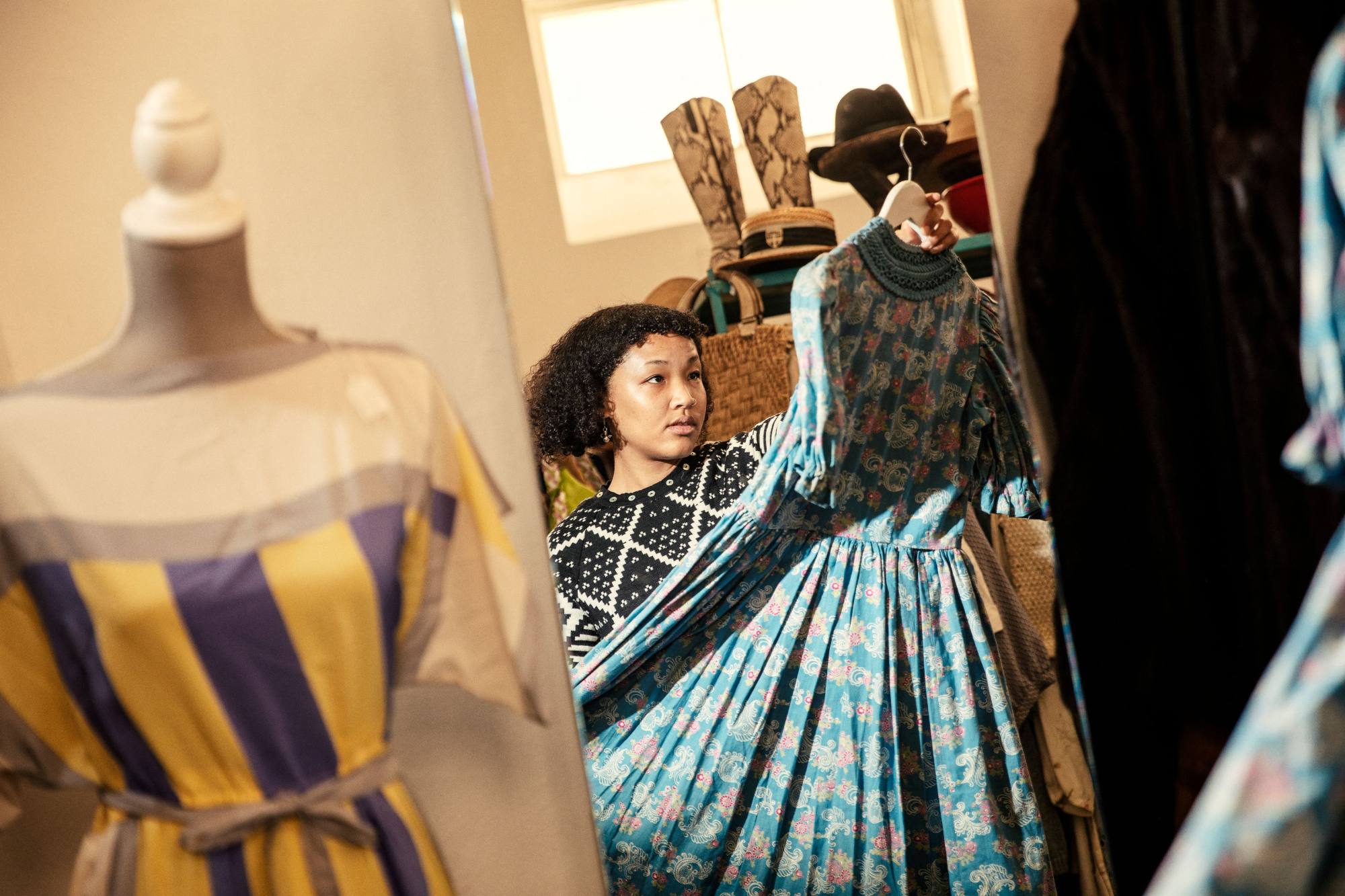
Shein, H&M and Zara better watch out – sustainability influencers are fighting back against fast fashion
- Content creators are promoting sustainability online, where fast fashion companies have helped flood social media with posts encouraging people to buy more
- Influencers like Masego Morgan and Venetia La Manna are encouraging people to buy less and to seek out second-hand or ultra-sustainable options
Sustainability influencer Masego Morgan was shocked when a fast fashion giant offered her US$1,000 for a single social media post to promote its brand.
Not only had the South African social media star never been offered that kind of money, the company represents exactly what she is against: overconsumption of cheap, planet-harming clothing made by underpaid workers.

This growing army of influencers are seeking to expose the environmental damage caused by huge fashion firms like Shein, H&M and Zara.
They also encourage climate-conscious fashion choices – what Morgan calls “mindful consumption” – asking people to buy less or, if they do have to buy, to shop second-hand or ultra-sustainable.
For Singapore shoppers, second-hand stores offer alternative to fast fashion
Morgan started borrowing thrifted clothes from her stylish Japanese mother, who used to tell her that “mending is a revolutionary act”, and encouraged her to repair clothes instead of buying new ones.
The 26-year-old, who posts much of her content from her Cape Town kitchen, said she tries to hold corporations to account instead of making people feel guilty about their choices.

Influencers like her are “agents of change”, said Simone Cipriani, the chair of the UN Alliance for Sustainable Fashion and founder of the Ethical Fashion Initiative.
“They counter the negative influence of another kind of thing that you find on social media … overconsumption.”
Young Indians turn to thrifting and shun ‘boring’ fast fashion
A mainstream influencer in a Western country can easily make six figures a year through sponsored content and affiliate links. And the more followers they have, the more they can charge brands.
Social media has helped boost fashion sales, with global consumption of clothing, footwear and accessories doubling since 2000, according to the Hot or Cool Institute think tank.
But that has come at a steep price for the planet. The clothing industry accounted for an estimated two per cent of global greenhouse gas emissions in 2019 – about the same as the airline industry – according to the World Resources Institute.

Those emissions could increase by 55 per cent by the end of the decade, it added. They would need to decrease by 45 per cent to limit warming to 1.5 degrees Celsius as outlined in the international Paris Agreement.
The environmental footprint of fashion production and consumption needs to be reduced by 60 per cent in high-income countries to limit global warming, according to the Hot or Cool report.
Your used underwear can now be composted to grow food – yes, really
Exposing the harmful impact of fast fashion corporations is at the core of Venetia La Manna’s content.
The 33-year-old influencer has garnered a massive following online, with some 6.5 million views on TikTok and Instagram for her “Recipe for Disaster” series about the social and environmental damage done by companies like Adidas, Amazon and Nike.
She makes a decent living and works with resale sites like Vestiaire Collective, eBay and Depop. But it is not always easy competing with influencers that have the backing of fast fashion.
“We’re up against it in terms of money and power,” she said from London.
“In the past five years, I really do feel like this issue is on the map. It used to be that plastic and food were the main focus in conversations about our environment, but now fashion is really being talked about,” said La Manna.
Don’t feel too good about donating your old clothes – most end up unused
Love Island star Staniland is hopeful that good-for-the-planet businesses will continue to grow on social media.
And he has notched up a few wins. The 29-year-old was instrumental in getting the show to switch their sponsor from fast fashion companies to eBay.
But for now, it can be an uphill battle. Like most sustainability influencers, Staniland has to rely on multiple income streams.
After turning down the US$5,550 from a fast fashion giant, he worked with an underwear brand he believes in, One Essentials, but still needs his modelling to pay the bills.

.png?itok=arIb17P0)